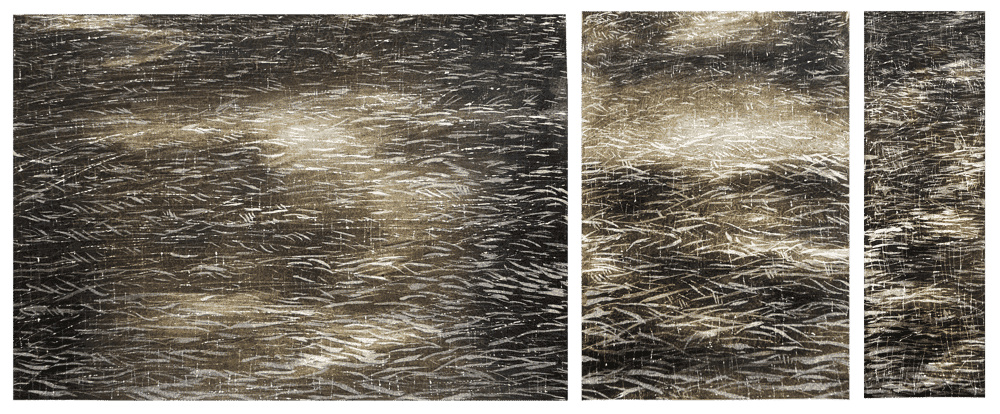#InConversation with Joydip Acharjee
By Sanjana Srinivasan | Nov 21 2023 · 8 mins
Joydip Acharjee is a Baroda-based artist who is deeply influenced by the moving images that the hustle and bustle of the city make him experience, and the architectural sites with their repetitive designs and patterns. As a painter, these architectural structures that he creates, signify different aspects of unplanned heartless urbanisation. Here, Sanjana speaks to Joydip about his practice.
Sanjana - Hi Joydip! How have you been? It's quite the gap from your Online Viewing Room to now. Perhaps we can begin with where you are now? How has your practice developed since your OVR? Are you still based in Baroda?
Joydip - Hello, I am glad to hear from you. It's good to see the series of questions shared by you, and I’m excited to take them up.
For the past three years, I have set my practice in Baroda. When I moved here from Tripura, it was a strange feeling. I carried with me memories of my home town, which I slowly merged into the fabric of my practice here. My works have developed and surely evolved as I set my foot here amidst the artist hub of Baroda, a fraternity woven by the Faculty of Fine Arts. Baroda School of thought has an intimate affinity towards Western art, methodology, and philosophies which I have assimilated in my art works. When I came here, I inculcated urban industrial growth in my ongoing practice and now I am meeting with senior artists and discussing the prospects of my work. It has opened my mind to newer ideologies. I still work at my studio in Baroda and I am soon planning to expand and move to a larger studio space.
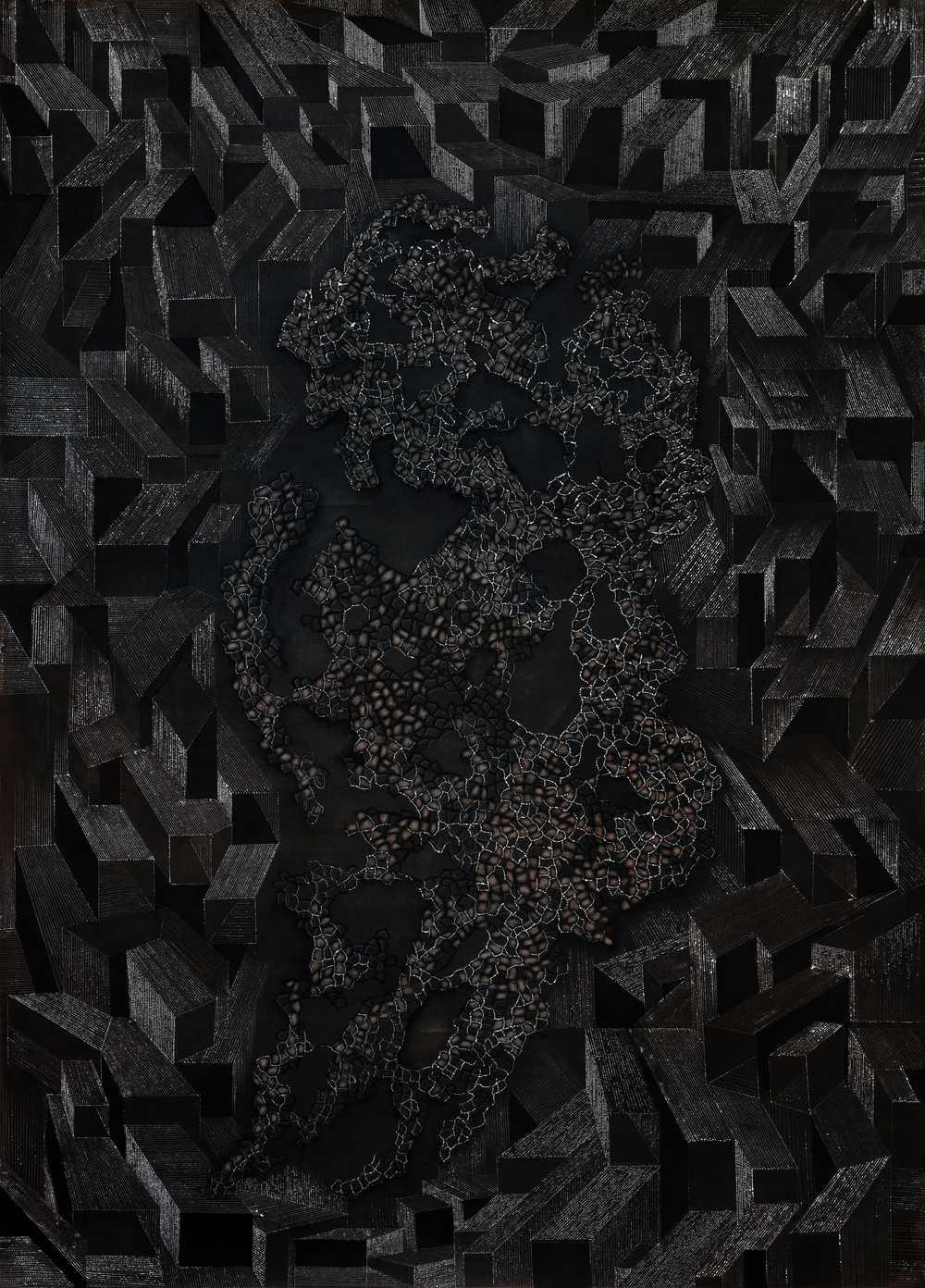

Longer Existence II, 2023
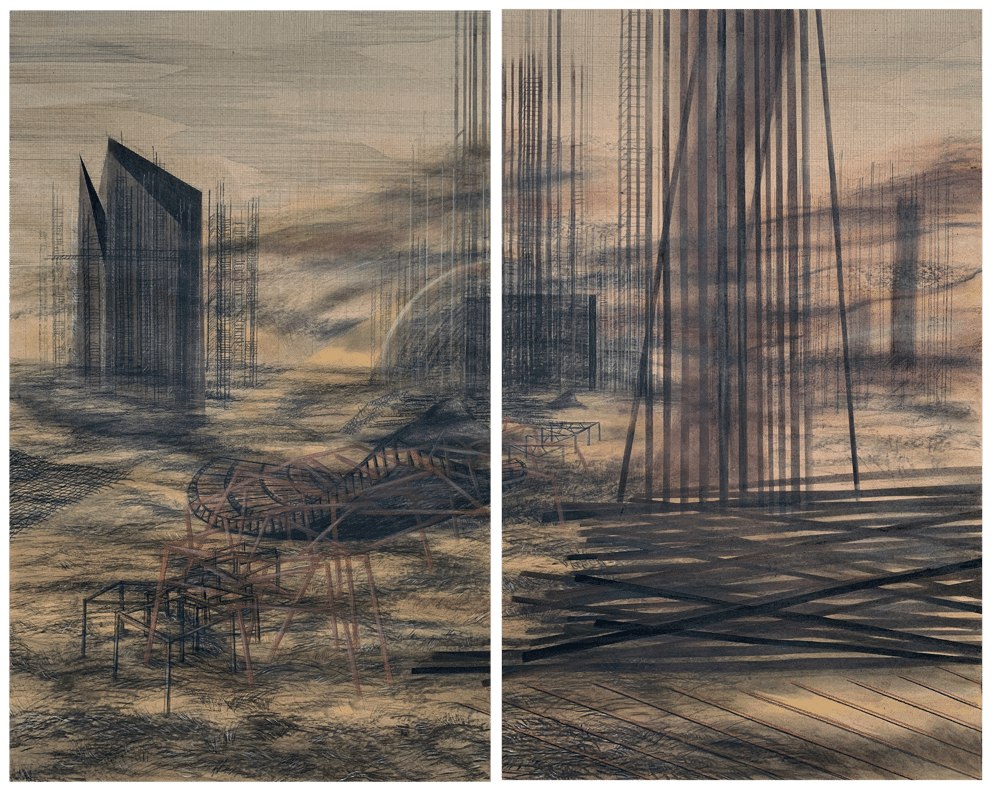

Green Field, 2020
Sanjana - That’s brilliant. You know, one of the first things that drew me to your work is your use of material—carbon dust. And I remember having a conversation with you about it before your OVR. Can you speak about how you came across this material or chose it to depict your works? And how do you actually collect this material?
Joydip - The materials of my artworks somehow themselves came to me. I moved from an agricultural land to an urban terrain. The contrast was sharp and it was from here that I observed the carbon dust in the air. Often when one travels through the highways here one can see how sometime late in the night, many industries release carbon. I have observed carbon clouds being emitted in the night. This mainly comes from Baroda’s industrial growth, spread around 5-6 km around Baroda in its outskirts. I first used carbon during Space art residency collected from a chimney in an abandoned space. I did some installations and drawings with the same. As the carbon waste is deposited and released in the night, I would go to collect the residue. Somehow, I believe urban growth is naturally connected to my work due to its very contrasting nature to how I had lived earlier. I also do work with iron dust collected from factories.
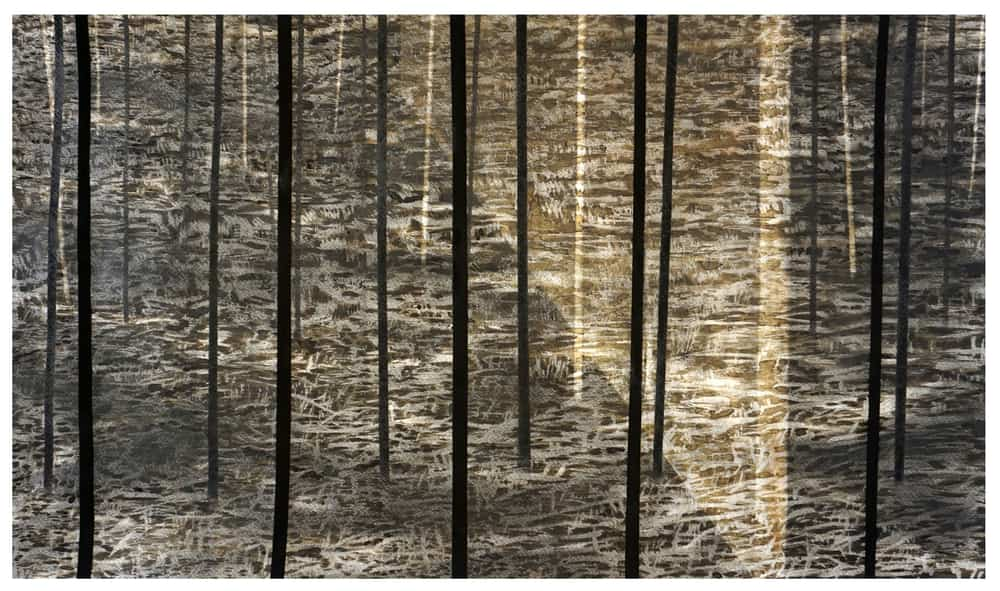

Plot, 2019
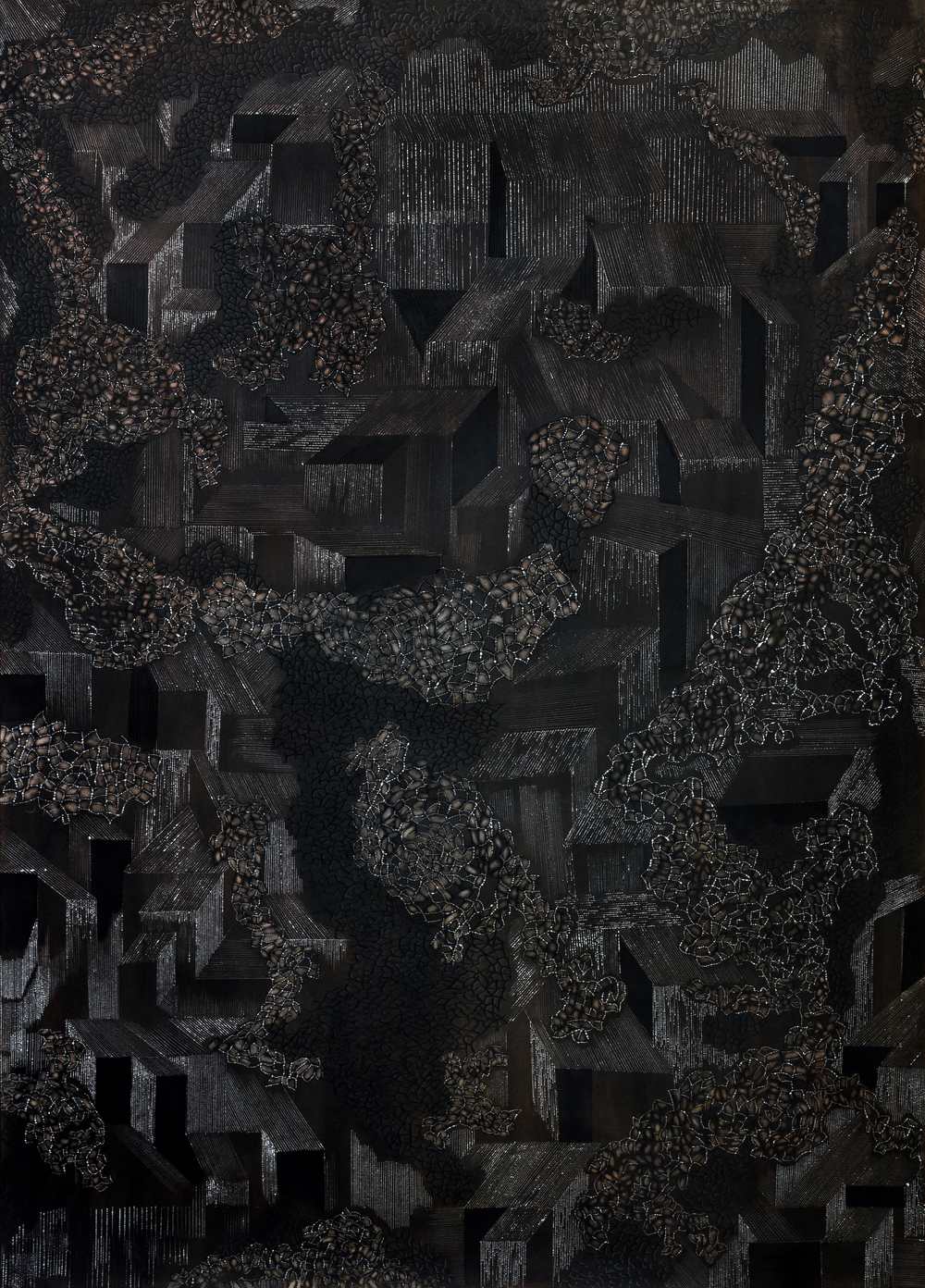

Longer Existence I, 2023
Sanjana - Speaking of your works, and subject matter—there are many things to tackle in this interview. Let's first talk about the coexistence of organic and inorganic forms in your work. At first glance, it seems highly structured, highly architectural; in other words, inorganic. But the closer one looks, one starts to observe other things, interwoven and curvy shapes and what not. I remember asking you if it was barbed wire/mesh and you told me that it was not—that it was actually a mushroom that grew back in your hometown in Tripura. Or take the example of the difference between a work like Plot, 2019, and Longer Existence I, 2023. What exactly are you trying to showcase in your works with these contrasting forms?
Joydip - Very keenly observed, the organic and inorganic are both the very innate characteristics of nature. As I observe the world around me, the surroundings, from minute details of plants to a gigantic form, everything leads me to a better understanding of forms and shapes. Most importantly, these observations highlight the balance between all forms.
When I visit construction sites, it is generally the inorganic which stays in my subconscious. I grasp the details of the site but it is very overwhelming sometimes to see such drastic change in the site overnight. I document the changes I see and later when I put them all on canvas, the macro character and the micro details come together. I try to balance them and keep them together in a visual way but I leave it open for the viewer to find their own patterns, open to their own imagination. For me, abstraction is in the details. As we hyper zoom into any surface, it becomes abstract. Even when we see any material very closely and minutely, it takes an abstract form. Sometimes the detailed texture of a substance becomes abstract. Individuality of something gives realistic rendered forms. Hence my works are somewhere in between the macro and micro, organic and inorganic.
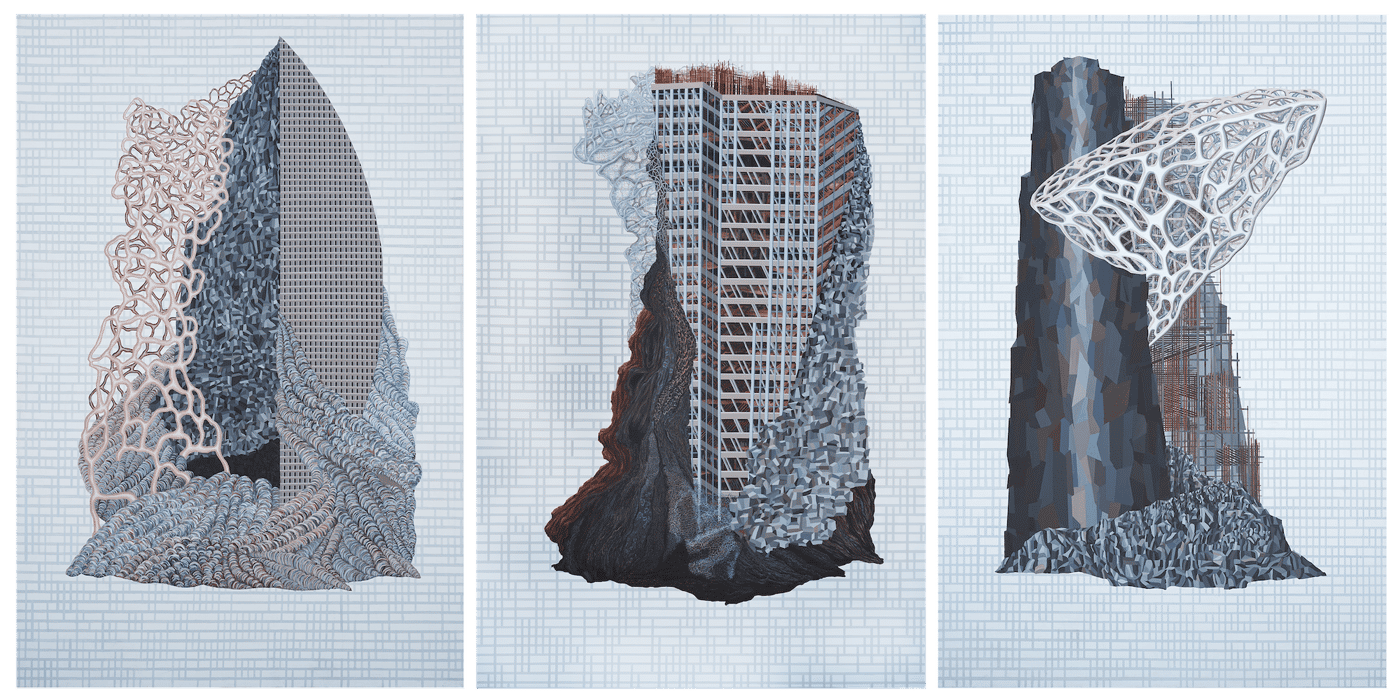

Humanisation of Nature, 2022
Sanjana - And then there is that balance between the abstract and the figurative. Works like Anatomy of Structure, 2019 and Humanisation of Nature, 2022 are completely different in how they try to depict the same subject matter. One is completely abstract and the other is very recognisable. How do you decide when to use a particular visual language? Like what dictates that a work should be abstract or not?
Joydip - The process of determining the visual language for me has been a very organic process. I let it come as it comes. I observe things near and closely. The first step is my photographic documentation. When I draw, that's when I decide to use the abstract or the real form. The layers of forms and structures stored in my memory also play along as I render the small details. Hence for me, it is an amalgamation of site experience, photographs, and memory of forms that play upon the canvas.
Sanjana - What is your research process like?
Joydip - The preparation for my works are my primary site visits and memories of where I grew up combined together. They somehow merge in my works—the reference, and the memory. I never make a layout of the work; it comes on its own as I work. It’s not logically done but it develops with time. It is a process in itself. Some forms are based on, as I said, photographic documentation, and some are very spontaneous and intuitive forms. The process is very time consuming. It requires a sensitive approach, and a detailed study. I am slowly adding new materials, exploring rather different mediums such as spray colours and dust of iron rust. There has been an experimentation in the visual as well.
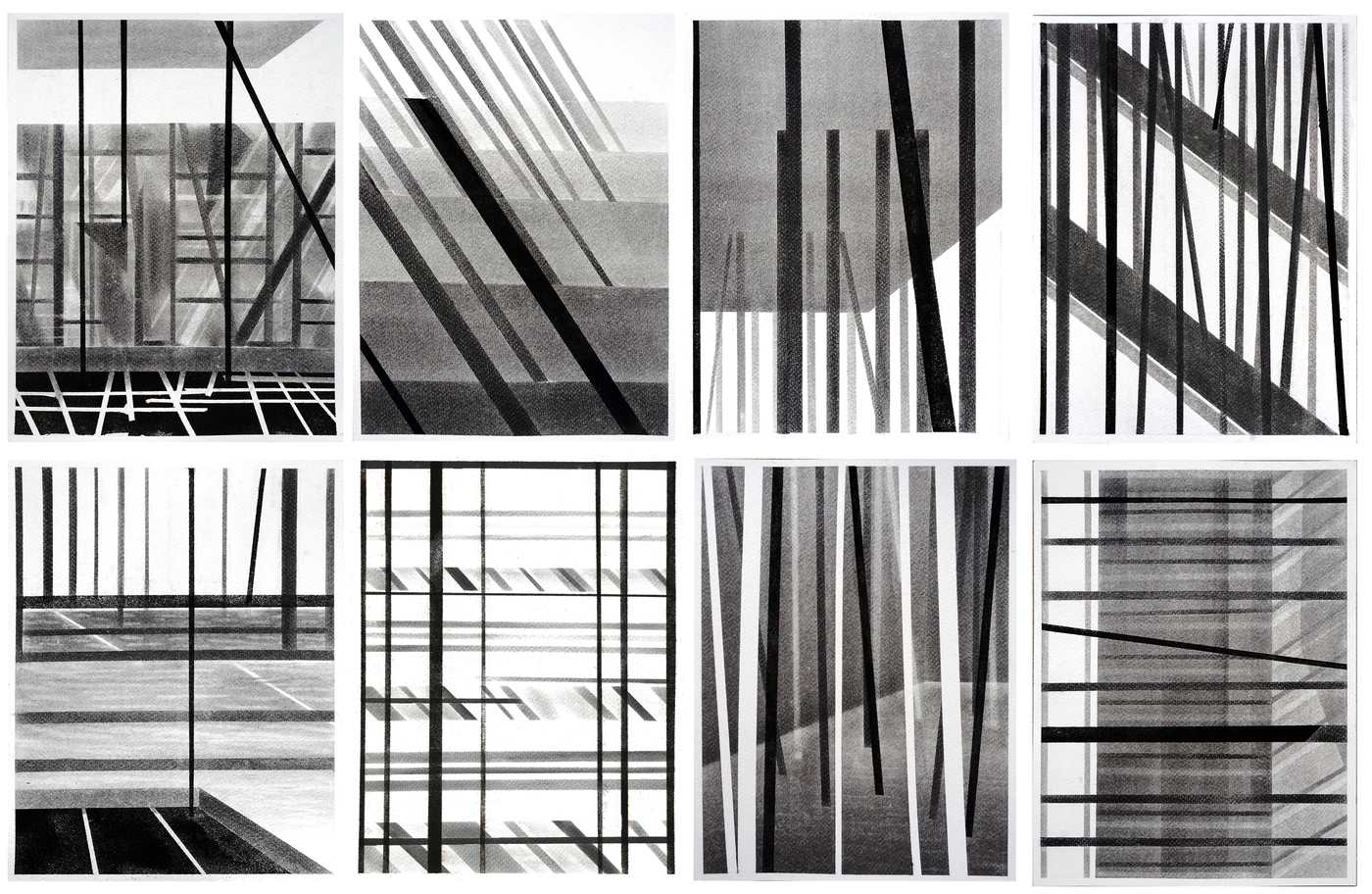

Anatomy of Structure, 2019
Sanjana - Tell me about your use of colour and its role in your practice. There are a lot of monotones—sepia, reds, black and whites, blues. And also tell me about the size of your works. Is large scale your preferred format? If so, why?
Joydip - I feel the colours communicate my feelings; they reflect the inner layers. I do repeat a palette of colours as it grounds the art work. An arena of monochromatic tones subdues the surface but also adds a deeper meaning. I play with hues of brown and blues, and smoky grey that symbolise urbanisation and carbon. But the colours are mostly innate colours of nature— brown is the colour of the soil, tree trunks. It’s a very natural colour. And blue is a very primary colour, the colour of the sky and blue waters and the wide oceans. And about the forms and shapes, I do like doing monumental works and will be continuing to produce bigger works. When I had a small studio I used to compile small works. Making a big work creates an impression. Just as huge sites make you feel small, large works hold the capacity to instantly gain the attention of a viewer to the subject matter.
Sanjana - Tell me about your video works and what you are trying to achieve using that medium.
Joydip - The video works are actually representations of my initial documentation of the site and is a very intriguing form in itself. I used to capture these videos for references as a part of my works. These are certain memories that I keep alive in the photo and video format. And as I don't make any layout for my canvases, I directly refer to these videos and they slowly started taking the form of an individual artwork, especially stop motion videos—like a moving painting captured on a digital canvas.
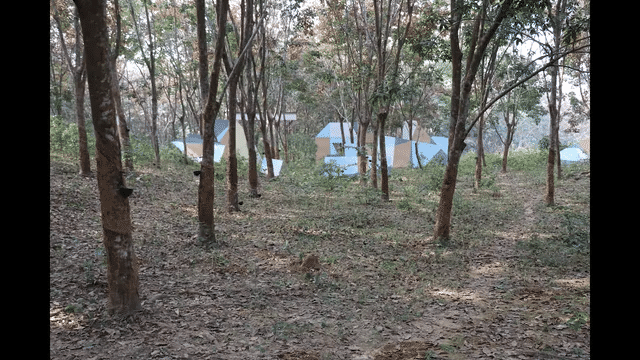

Deconstructing the Landscape, 2021
Sanjana - Do you consider yourself as an artist/activist? Because much of your work does point to environmental degradation on the looks of it. In a work like Green Field, 2020—it seems like you are making a sarcastic comment. But I also remember you telling me that you are actually interested in urban growth and structures? That your work is less about the environment and more about the future of building and growth. Can you speak a little more about this?
Joydip - I feel growth is important, growth is natural and the human race is rapidly moving, expanding, and evolving. I am not against growth. Humans grow, and human needs grow which is natural. What bothers me is recklessness. The very drastic speed of growth sometimes makes me think about nature, and many of these thoughts are reflected in my works. In Humanization of Nature, I ponder what this will lead to. I believe humans and nature should go hand in hand, they should coexist, be in sync. I pursue activism through art. I could probably be an art activist because I do express my thoughts and my statements through my works. I think as an artist, it is our responsibility to show reality to viewers—the reality of how we are going away from nature. Sometimes when we are driving across highway roads and animals cross our way, we feel they have come in the middle of our way but in reality, animals don’t come in the middle of our way or on our road but we have come into their homes, their spaces. My art practice merely conveys that we must consciously think about the future, that the needed growth and urban development are indeed needed but not at the cost of nature and depleting resources.
Sanjana - Last but not least, who are you inspired by?
Joydip - I very closely connect to Bengali literature. I feel as artists, we paint with colours. Writers express their emotions with words and words leave a very powerful impact. My thoughts align with writers who amend our ideologies, connect to us on a deeper level. Since a very long time, I have been reading literary works of Bibhutibhushan Bandopadhyay, Rabindranath Tagore, Sarabindu Bandopadhyay and also to mention western writers such as Noah Harari, Edgar Allan, Laura Ingalls Wilder.
Apart from literature, certain art movements have left an impact on my works. I have closely studied works of various artists working in Minimalist and Conceptual language of Post War Sculptures. I have also keenly observed the works of Futurism and Abstraction developed sometime between 1960-70. Russian artists such as Malevich, Tatlin and Kandinsky have been very inspiring.

